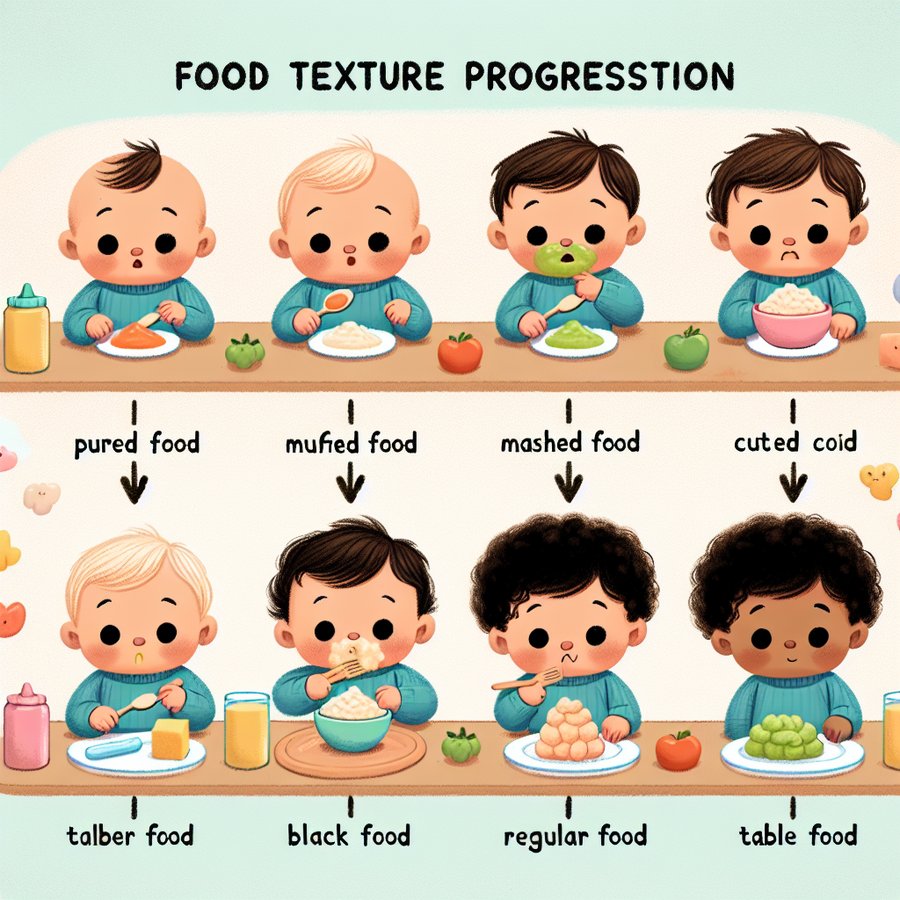The journey of introducing your baby to solid foods is an exciting time for both parents and little ones. Understanding the food texture progression timeline for babies is crucial in nurturing a healthy relationship with food from the get-go. This guide delves into the stages of food texture progression, offering insights and tips to make this transition as smooth and beneficial as possible.
Understanding the Basics of Food Texture Progression
Before diving into the food texture progression timeline for babies, it’s essential to grasp why texture matters. As babies grow, their nutritional needs and physical abilities to handle different food textures evolve. Transitioning through various textures not only supports their chewing and swallowing skills but also plays a significant role in sensory development.
The American Academy of Pediatrics recommends starting with smooth purees when introducing solids around 6 months of age, gradually moving towards thicker purees and soft, mashed foods. This progression ensures that babies can safely explore foods and build their eating skills without being overwhelmed. For a comprehensive understanding of introducing solids and managing potential allergies, consider reading about how to introduce solid foods to a 6-month-old baby with allergies.
Food Texture Progression Timeline for Babies
The food texture progression timeline for babies is a step-by-step guide to introducing your baby to a variety of textures, from smooth purees to more complex solid foods. It’s designed to align with your baby’s developmental milestones, ensuring a balanced approach to nurturing their growth.
Here’s a snapshot of the timeline:
- 6 months: Start with thin, smooth purees.
- 7-8 months: Introduce thicker purees and very soft, mashed foods.
- 9-10 months: Experiment with soft, small pieces of finger foods.
- 10-12 months: Offer a variety of textures, including more challenging solid foods.
During this journey, it’s important to monitor your baby’s reactions to new textures and adjust accordingly. For a deeper dive into introducing textures in baby food, learn more about introducing texture in baby food.
Tips for Successful Texture Progression
Navigating the food texture progression timeline for babies smoothly requires patience, observation, and a bit of creativity. Here are some tips to help you along the way:
- Observe your baby’s cues and be responsive to their readiness and interest in exploring new textures.
- Introduce one new texture at a time to make it easier to identify any potential food sensitivities or allergies.
- Use a variety of foods to expose your baby to different flavors and nutrients, ensuring a well-rounded diet.
For parents dealing with specific dietary concerns, such as lactose intolerance or the need for high-calorie foods, resources like lactose intolerance in infants and high-calorie foods for underweight toddlers can offer valuable guidance.
To sum up, understanding and following the food texture progression timeline for babies is key to supporting your baby’s nutritional and developmental needs. By introducing a variety of textures at the appropriate times, you’re helping set the foundation for healthy eating habits that will benefit your baby for years to come. For more insights into baby nutrition and feeding strategies, explore our extensive collection of articles and resources.













